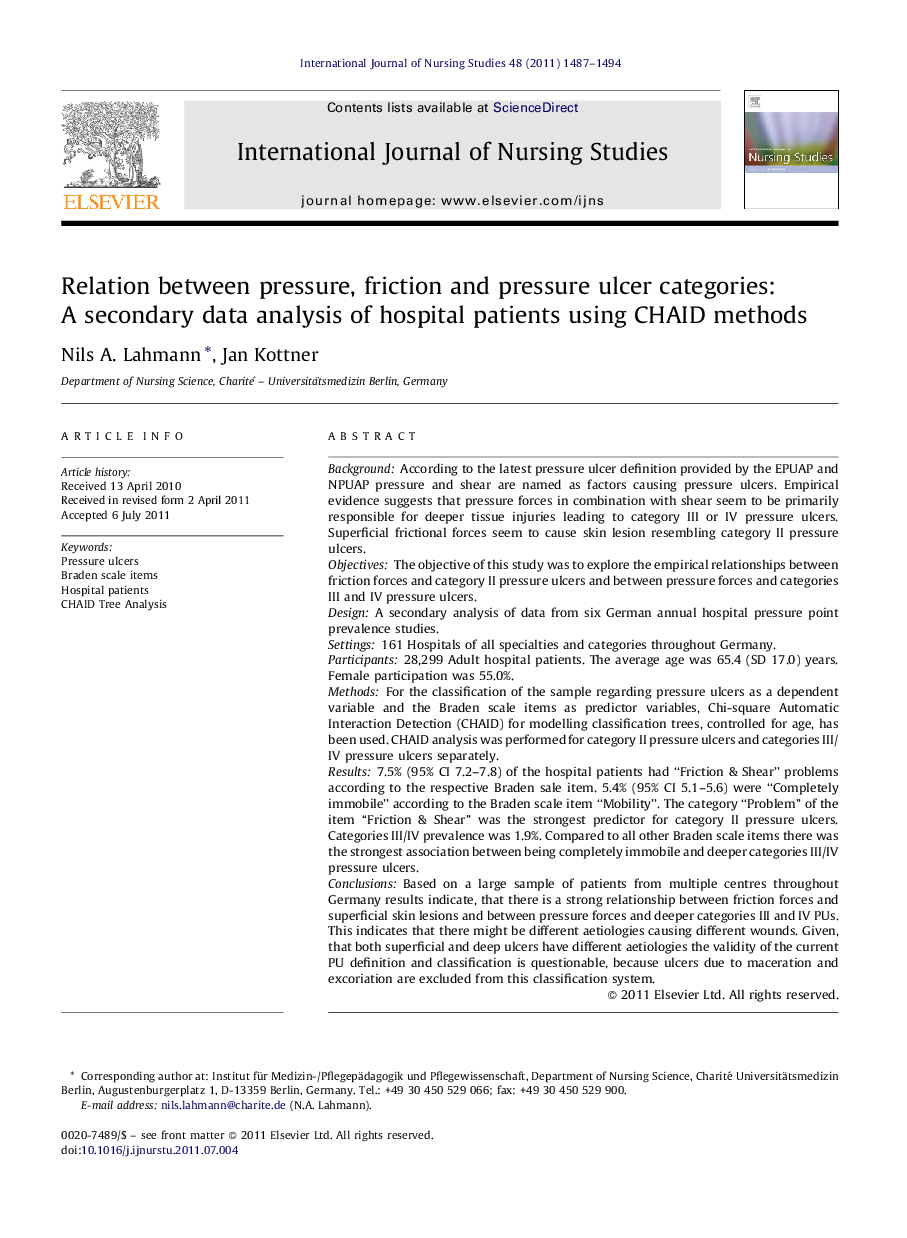| کد مقاله | کد نشریه | سال انتشار | مقاله انگلیسی | نسخه تمام متن |
|---|---|---|---|---|
| 1076633 | 1486565 | 2011 | 8 صفحه PDF | دانلود رایگان |

BackgroundAccording to the latest pressure ulcer definition provided by the EPUAP and NPUAP pressure and shear are named as factors causing pressure ulcers. Empirical evidence suggests that pressure forces in combination with shear seem to be primarily responsible for deeper tissue injuries leading to category III or IV pressure ulcers. Superficial frictional forces seem to cause skin lesion resembling category II pressure ulcers.ObjectivesThe objective of this study was to explore the empirical relationships between friction forces and category II pressure ulcers and between pressure forces and categories III and IV pressure ulcers.DesignA secondary analysis of data from six German annual hospital pressure point prevalence studies.Settings161 Hospitals of all specialties and categories throughout Germany.Participants28,299 Adult hospital patients. The average age was 65.4 (SD 17.0) years. Female participation was 55.0%.MethodsFor the classification of the sample regarding pressure ulcers as a dependent variable and the Braden scale items as predictor variables, Chi-square Automatic Interaction Detection (CHAID) for modelling classification trees, controlled for age, has been used. CHAID analysis was performed for category II pressure ulcers and categories III/IV pressure ulcers separately.Results7.5% (95% CI 7.2–7.8) of the hospital patients had “Friction & Shear” problems according to the respective Braden sale item. 5.4% (95% CI 5.1–5.6) were “Completely immobile” according to the Braden scale item “Mobility”. The category “Problem” of the item “Friction & Shear” was the strongest predictor for category II pressure ulcers. Categories III/IV prevalence was 1.9%. Compared to all other Braden scale items there was the strongest association between being completely immobile and deeper categories III/IV pressure ulcers.ConclusionsBased on a large sample of patients from multiple centres throughout Germany results indicate, that there is a strong relationship between friction forces and superficial skin lesions and between pressure forces and deeper categories III and IV PUs. This indicates that there might be different aetiologies causing different wounds. Given, that both superficial and deep ulcers have different aetiologies the validity of the current PU definition and classification is questionable, because ulcers due to maceration and excoriation are excluded from this classification system.
Journal: International Journal of Nursing Studies - Volume 48, Issue 12, December 2011, Pages 1487–1494